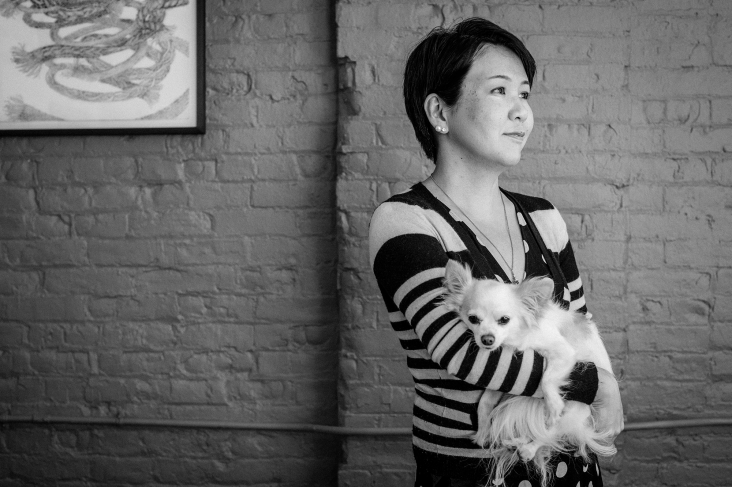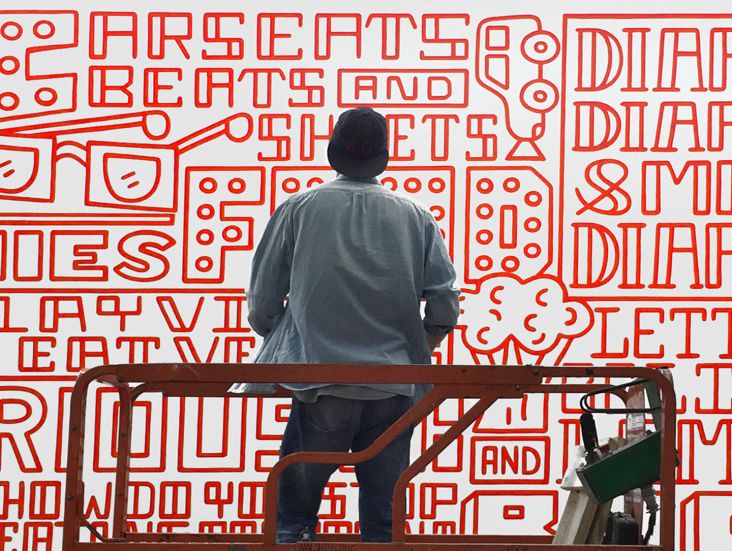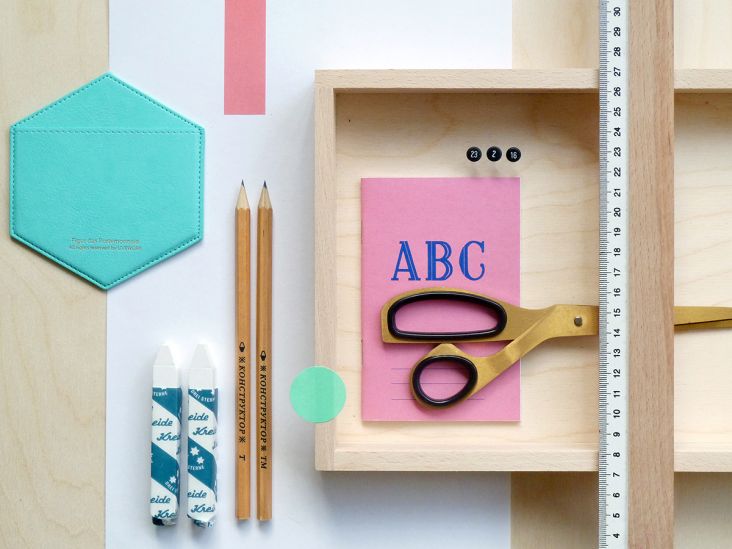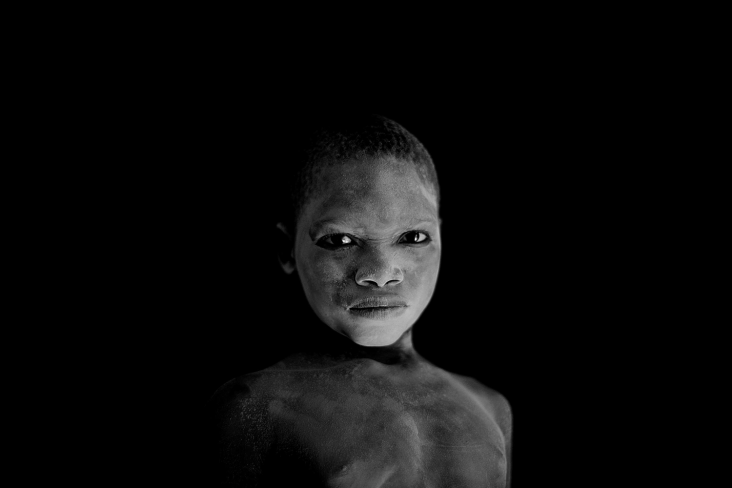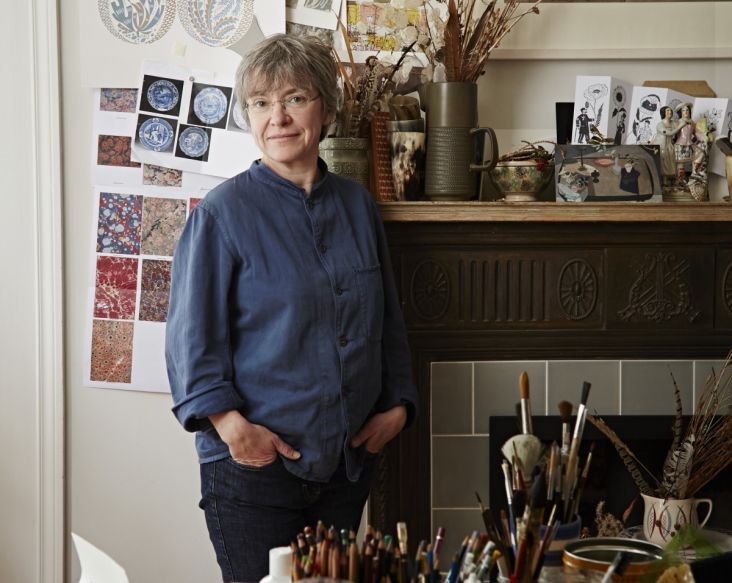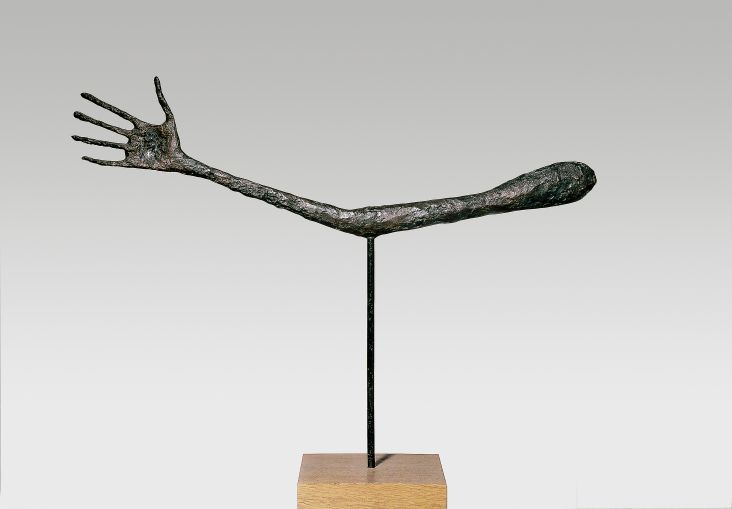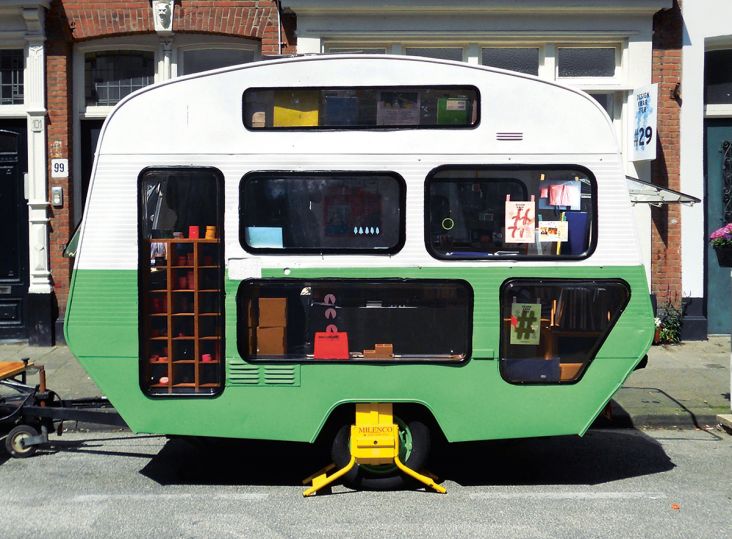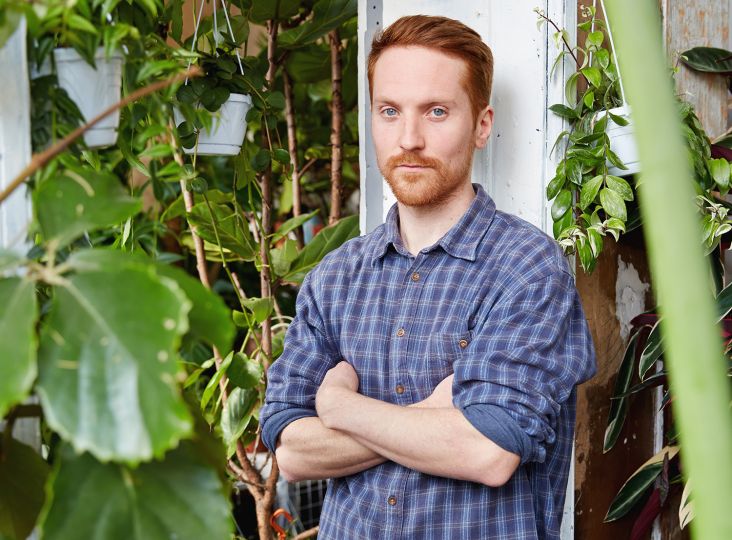Ceramic artist Matthew Raw on tiling stories, transportation by barge and post-industrial Manchester
Matthew Raw is a ceramic artist who seeks to push the possibilities of clay to communicate and to challenge public perceptions of what it can do as a material.
](https://www.creativeboom.com/upload/articles/f7/f764d708268c8a023246f8d4dd3cf0fab89809c0_1280.jpg)
Photography by Marina Castagna
Based in East London, he is a co-founder of Studio Manifold in Hoxton, an artistic collective of nine Royal College of Art graduates, and has participated in group shows, collaborative projects, and exhibitions in London, Munich, Copenhagen, Detroit and more.
He collected the Jerwood Prize in 2014 for 'The Shifting Spirit', a full-size interpretation of a tiled pub exterior now on permanent display at the Five Points Brewery in East London.
He has recently been working with the architecture collective Assemble for an Art on the Underground project at Seven Sisters Underground station. Matthew also runs practical public workshops in ceramics via rawceramicworkshops.com.
In May, Matthew is devoting his first solo exhibition to examining the relationship between shifting populations and the built environment through a series of eight sculptural ceramic artworks.
Supported by Arts Council England, 'Clad' takes place over ten days at the Ragged School Museum in Tower Hamlets during London Craft Week. Each of Matthew's works will use ceramics as a means of engaging with Britain's manufacturing past and its evolving craft culture. We spoke to Matthew to chat about ceramics, craft inspirations and the importance of history in manufacturing.
Tell us about where you studied and how you've got to where you are now
My BA was in Brighton on the 'Wood, Metal, Ceramics & Plastics' course. It was super workshop-based, and I got a good understanding of lots of materials and processes, and how to translate ideas into 3D objects. After graduating in 2006, I moved back to Manchester for a year before heading to Denmark to do a six-month-long residency. That's when I became serious about using clay and got onto the 'Ceramics & Glass' MA at the Royal College of Art, graduating there in 2010.
Did you always have a love of clay?
Not at all. The art department at my high school didn't waiver much from drawing and painting, and clay needs space and mess to exist comfortably, which for some reason ruled out six-form and foundation. It was only really on my degree that I had a proper go with clay, which I chanced upon because of the multi-material nature of the course. It was its immediacy that instinctively drew me to it – you can shape anything, or an interpretation of anything, just by manipulating a ball of mud!
Describe your process. How does an idea transform into a finished product?
My work always starts life away from the studio. What am I thinking about? What do I want to convey? And then how can that translate into an exciting and eye-catching object? The majority of my time is spent working with clay, so naturally, that crops up in my thinking more often than not, but I try to stay open and let the idea lead, and over the years, I have also made work with wood, resins, and paper.
Let's talk about your exhibition – what's Clad all about?
Clad is about the relationship between the urban environment and the transient populations that pass through it. There are numerous physical traces on the urban landscape that different cultures and social groups leave in a given area over time.
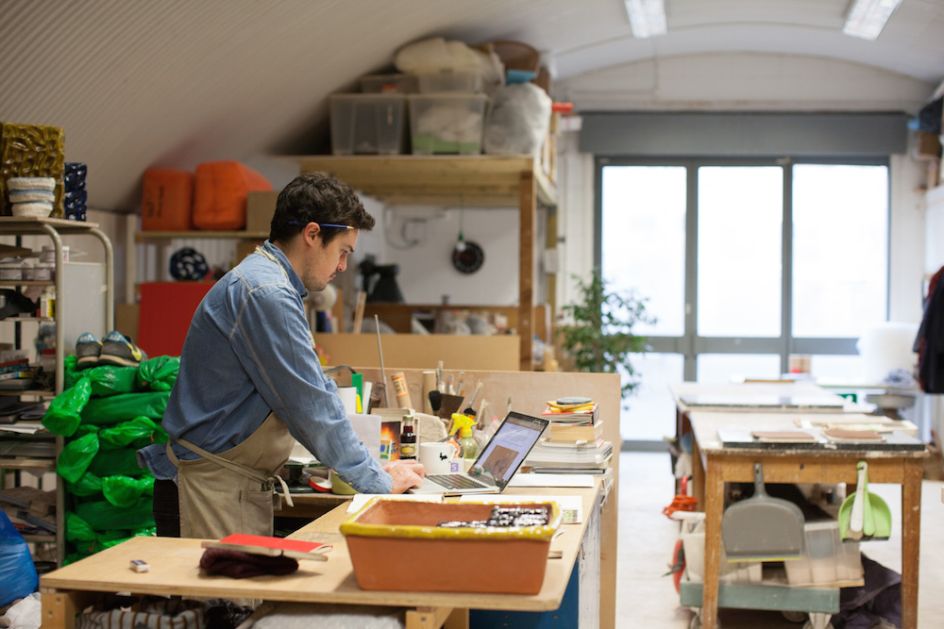
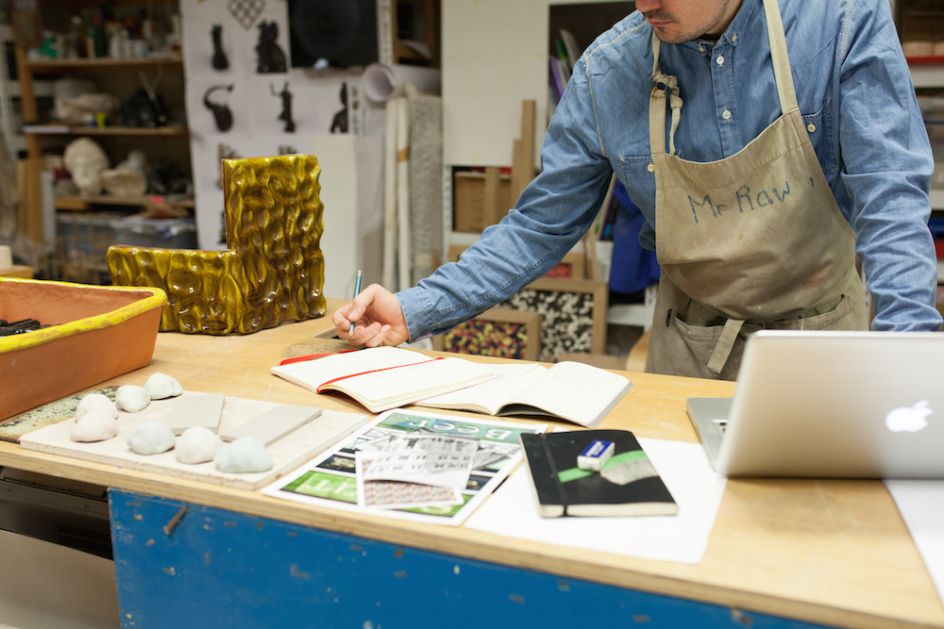
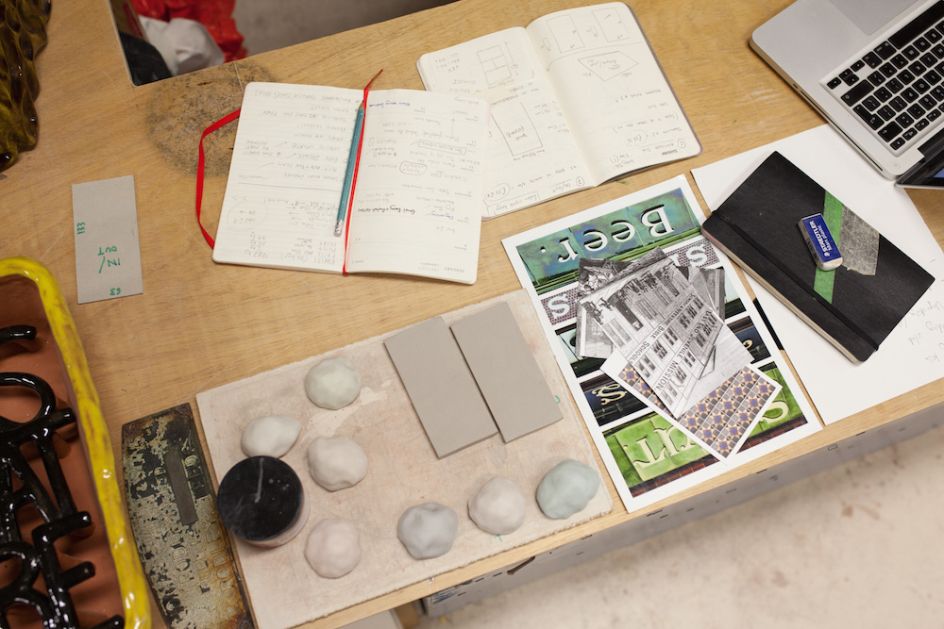
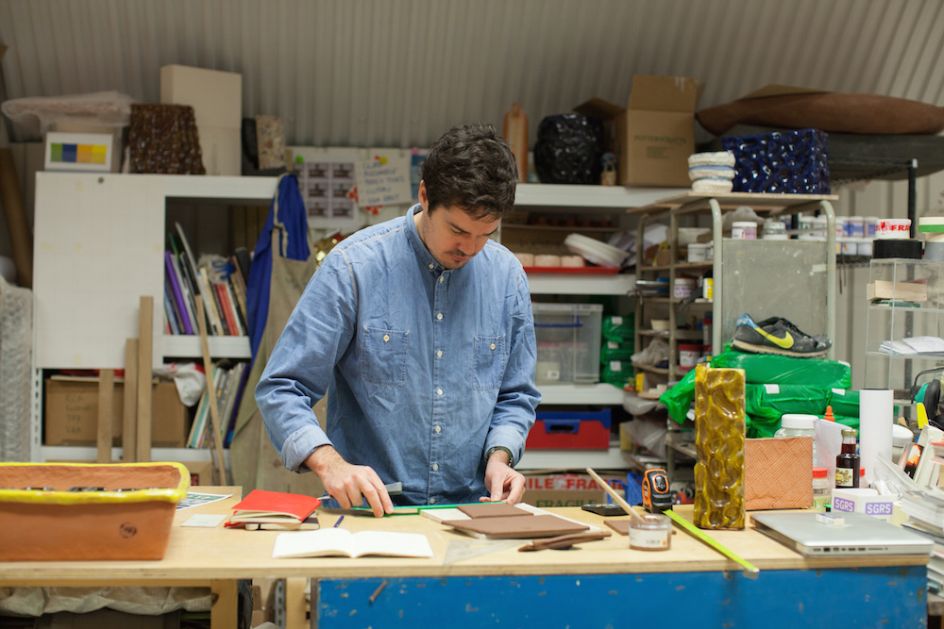
It's your first solo show. Has it been easy to put together?
The idea for the show began during my residency at the V&A Museum in 2015. I was exploring 'the tile' and had access to their unbelievable archive of objects. There was no pressure to produce final pieces, so that experimental time was crucial to push ideas in a free environment. But I wanted the tests and concepts to develop, and that's where 'Clad' came from.
I found the Ragged School Museum, which is the perfect fit for the show, complete with brilliant and supportive staff. After all of that, it was a case of pulling the research together and communicating it to the Arts Council in a funding bid. At this stage, it's more of a logistical challenge marrying project management with intensive making in the studio, as the exhibition will be made up of entirely new work.
What is it about tiles that interests you in particular?
It is 'urban grids' that I am particularly drawn to—brick walls, tiled façades, paving, etc. I have come to realise that growing up in post-industrial Manchester has shaped this appreciation and aesthetic interest. A pre-Christmas visit to Lisbon really hammered home to me the international and historical significance that tiles have.
Living in London surrounded by such a variety of interior and exterior architecture and building techniques provide me with constant inspiration, as does travelling the Tube, which further localises my research.
What form will your eight works take? Do they all explore the same theme?
The pieces for Clad are all based on 'the tile' and the grids that we find around us. Modern grids found in cities are generally graphical, and they have inspired me, but I also class a cobbled road as an urban grid, which is much more organic.
Five of the pieces are wall-based, one lives on the floor, and two are freestanding sculptures. Some of the pieces are plentiful in the number of elements that make them up (the most extreme of which is the 100 tiles that come together to create 'Individual Motives'), while others are bespoke and look to have been plucked from an imaginative group ('Flex'). 'The Inscription Remains Forever' suggests transience and sits among works that have been made physically permanent with adhesive ('In / Out').
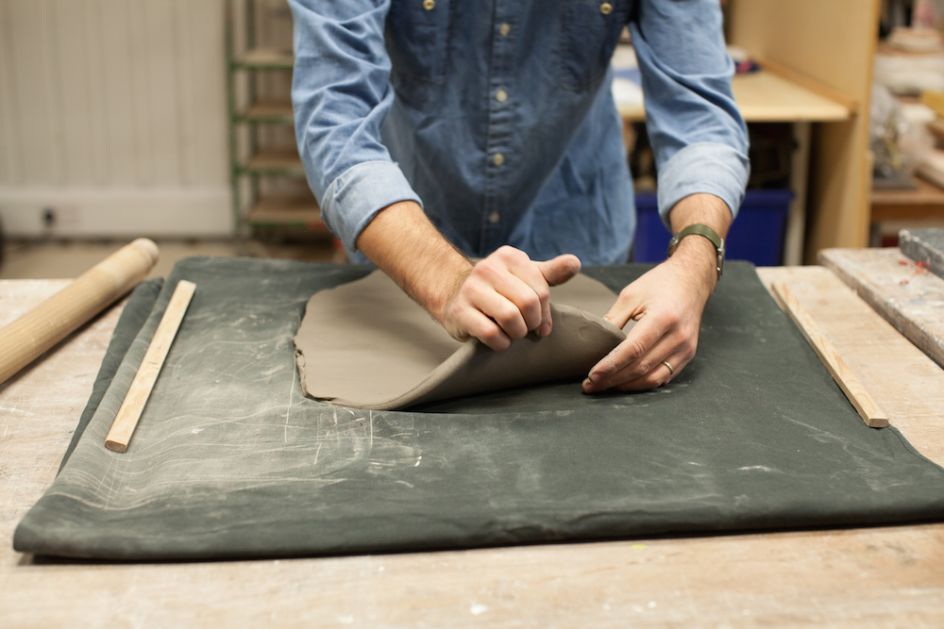
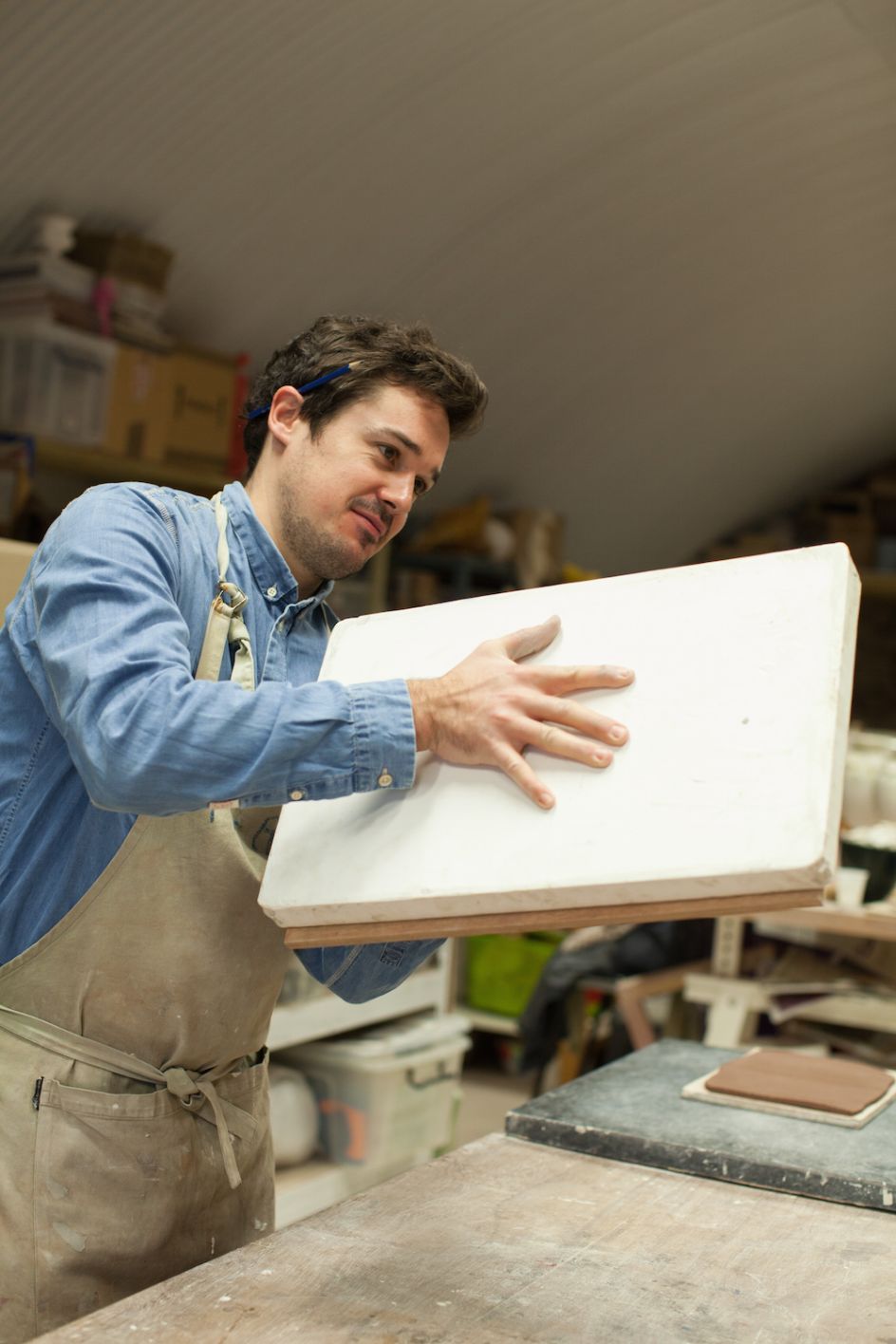
Are the works all of a similar scale/level of complexity?
How long does each take to make? All of the works take different amounts of time to produce. Most of them are made up of multiples, so it means a lot of juggling in the production stage. Every piece is hand-made through a variety of techniques – press-moulded, rolled, scratched, carved, slab-built and coiled work combined to produce the pieces at the making stage.
I then have to factor in how to 'finish' them, adding a second firing in the kiln if the piece is glazed. The irony is that I got hooked on using clay due to its immediacy. However, the process soon becomes time-consuming once the drying time and firings are taken into account.
Have you had to acquire new skills or develop new techniques in the process?
I think that when you take the plunge to translate tests and/or ideas into a fully-fledged piece of work, then there is loads of tweaking and new understanding as you go. The piece that is the riskiest (and therefore exciting) is the tiles that make up 'Individual Motives'.
After firing, I am taking the tiles to the studio of Martin Smith (acclaimed ceramic artist and former RCA Ceramics & Glass head, of course), where we will trim them down using a diamond saw to achieve a crisp edge. I've never done that before, but I need the tiles to 'butt-up' against each other in a precise way.
To achieve the scale I want for 'Flex', I have had to do lots of work behind the scenes in preparation for the thick, heavy slabs. Time will tell if this works out. Other pieces that I am more practised at in the making are pushed in the installation ('Create A Scene' and 'Fearful Symmetry') or glazing stages ('Panel Discussion').
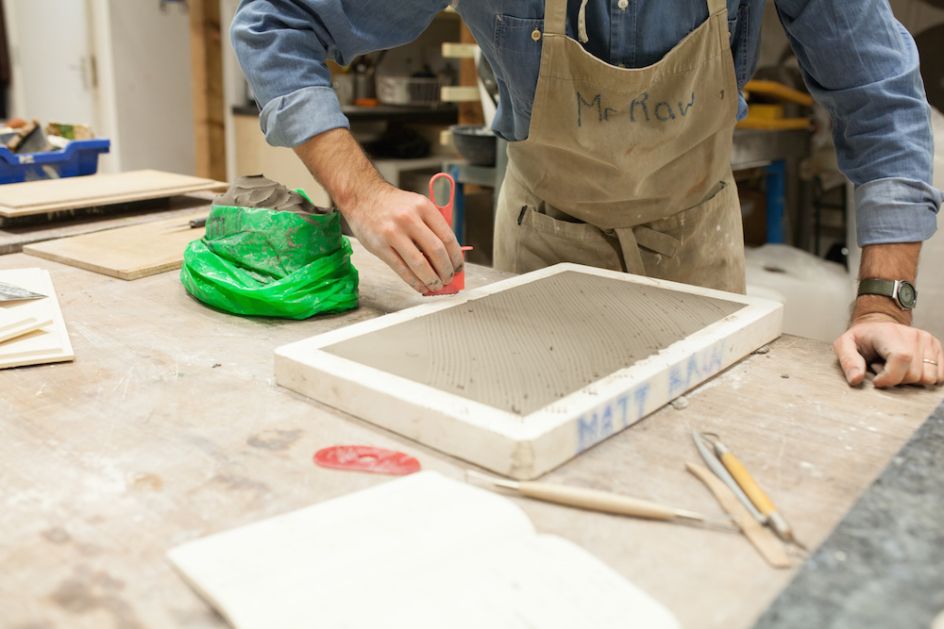
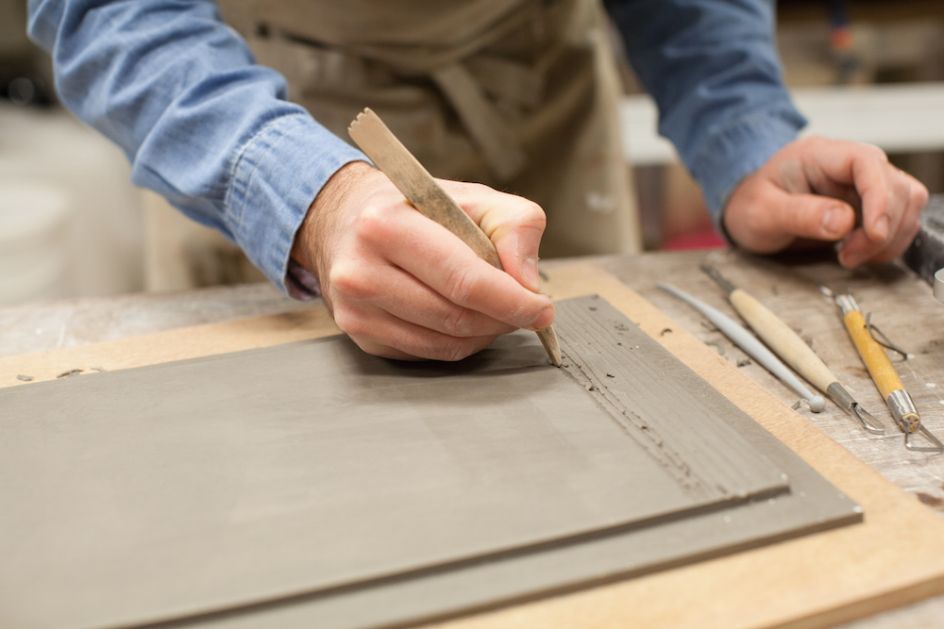
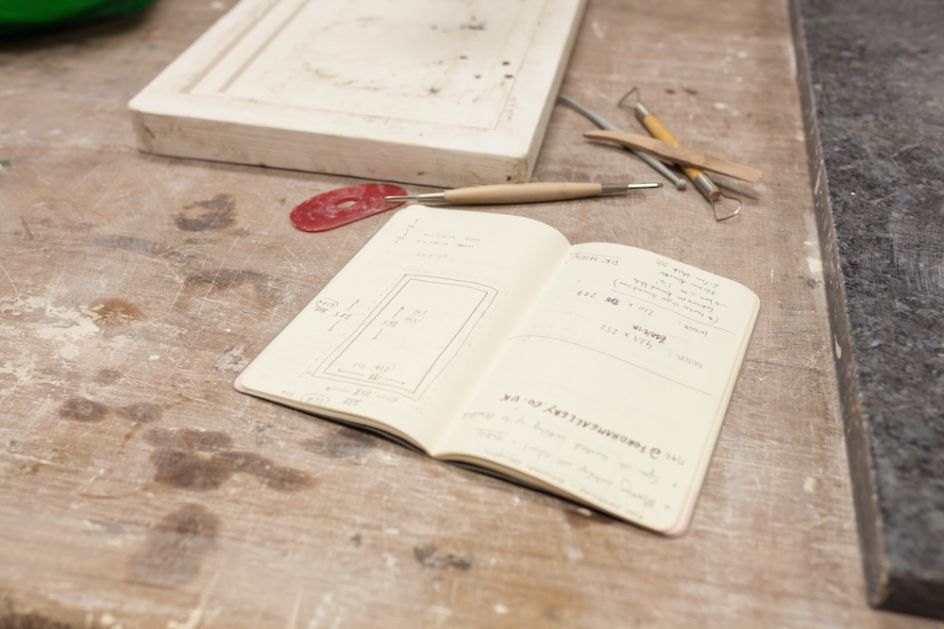
You're interested in shifting populations and the built environment – do you think a shift is happening now?
Shifting populations is always a prominent topic of conversation, and it is something we can all relate to in one way or another. In the week of writing this, 'President' Trump has had his racist say on the international movement of people. Locally to me, East London has a rich and varied history of people arriving and leaving, and I love finding out more about this element of the area. This ebb and flow translate directly into aesthetic changes in the built environment, including its architecture.
Is now a good time to be based in London? How do you find it?
London is always fun and full of life. It has been my home for the past eight years, and I love living and working in Hackney. I am attracted to its transience in many ways, but it is also a shame that it prices so many people out of relaxing into staying here.
The demand (of which we are all part of) means greedy landlords can charge stupid rents comfortable in the knowledge that they don't need you because you are a replaceable commodity. London is a game that I have enjoyed playing, but the more I know about its direction, the more I dislike it and think of moving on.
What unique elements does the Ragged School Museum itself bring to the exhibition?
The interior and exterior of the building is incredibly rich and relevant to me and Clad in terms of architecture and how it has been used. It helps the show explore how the area has witnessed first-hand the move from an economy built on hand manufacturing in the pre-industrial era to its current post-industrial landscape.
Its canal-side location also sparked the idea to transport the pieces on a barge to the museum from my studio in Hoxton – a physical link between where the work will be shown and where it was made. And in more contemporary terms, it has seemed like the right place at the right time. Erica Davies, director of the museum, has been unbelievably supportive and enthusiastic, which helped me acquire the funding, and is now crucial in seeing the project through.
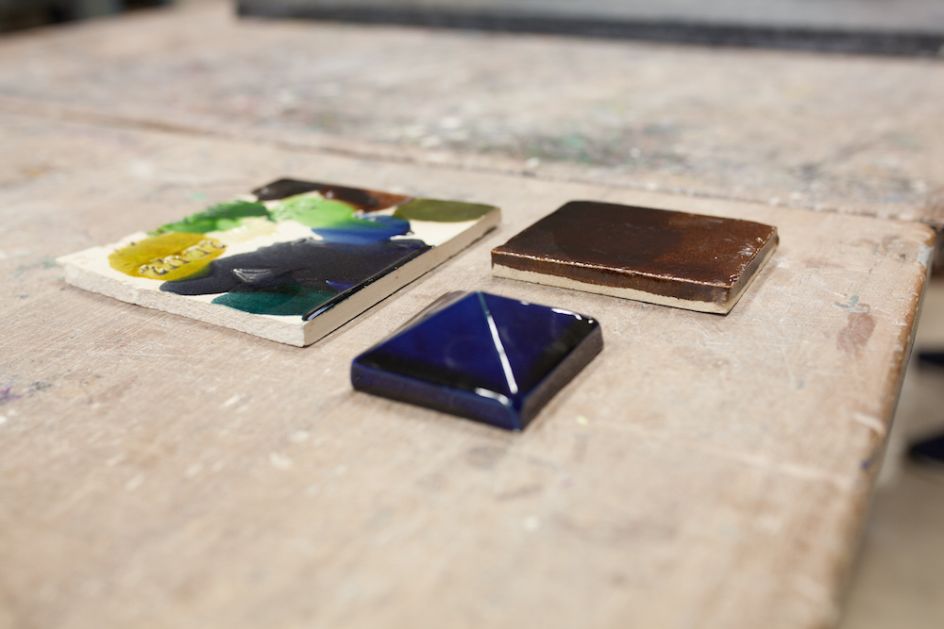
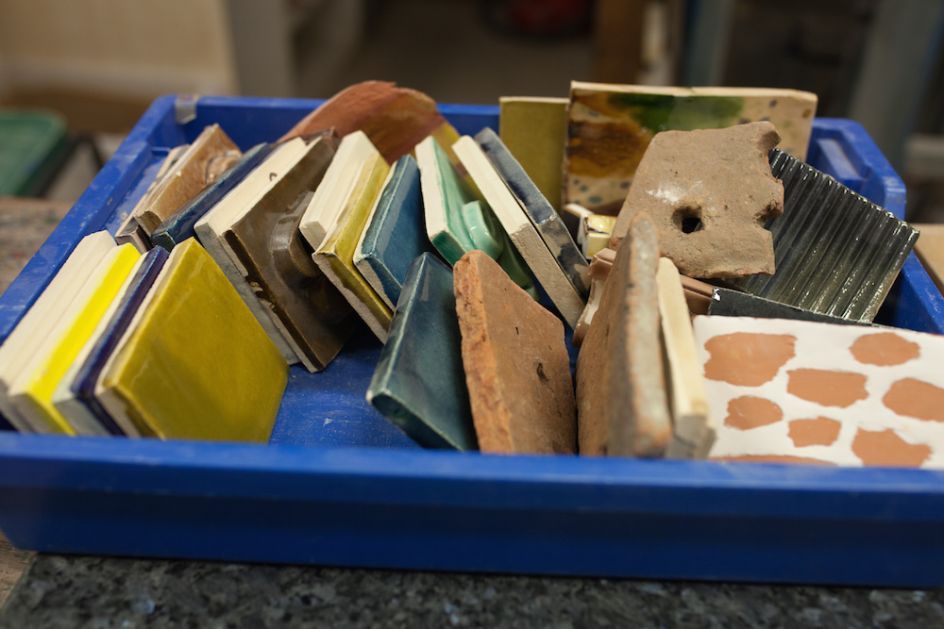
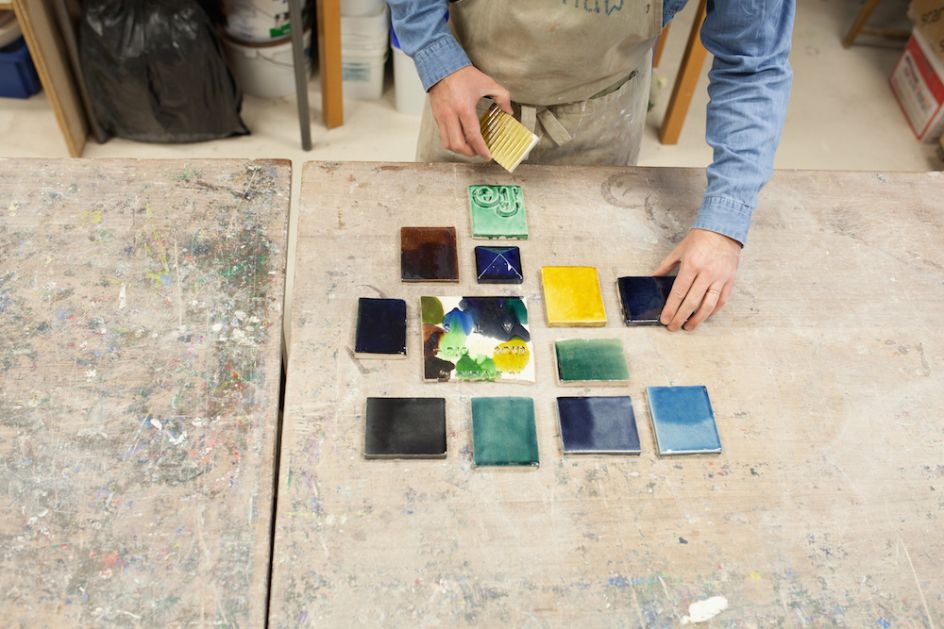
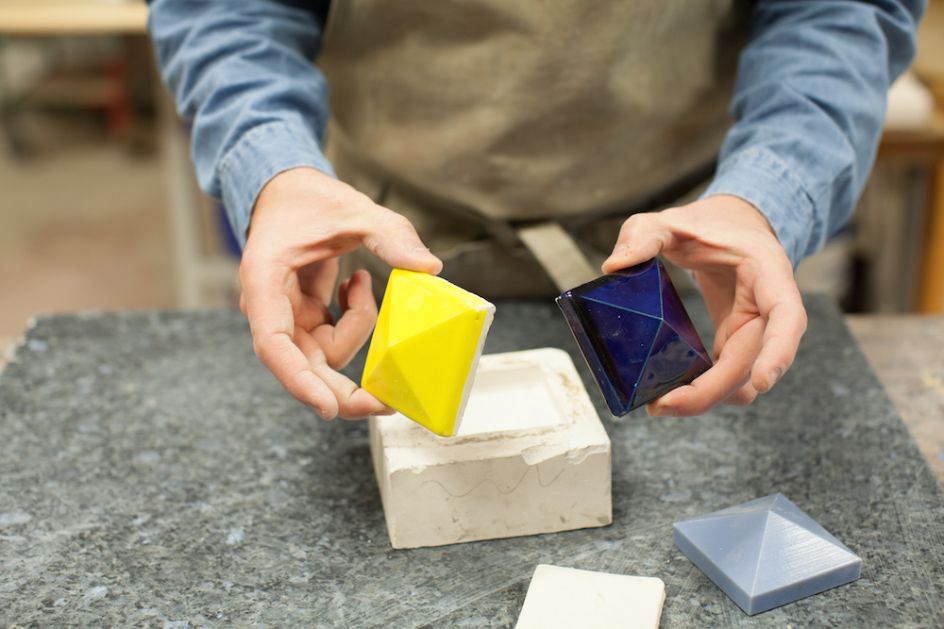
As you've called the exhibition 'Clad' – do you think there are parallels, symbolic or literal, between tiling and clothing?
Interesting question! The building does have a relationship with clothing – Dr Barnado's clothed thousands of impoverished children when it was his school in the late 19th century. It was later used as a store for rags, and a company called Highwayman Leather made their jackets in the building in the 1960s and '70s.
But I learned these factors well after I had named the show and decided on the museum for its location. I like the word 'clad' because it can be interpreted as being practical, sneaky, or represent aesthetic tastes. When I hear it, I do think about it in an architectural sense rather than clothing, but maybe I could open out my research… once I've made this show.
Any advice you can pass on to aspiring crafters out there?
If you are serious about being involved, then play the long game. Stay nice and open – it is easier to get known if you decide and stick to a style, but a few years down the line, that is all that people will want, and you will be bored. Get as much experience as you can work on a variety of projects, and meet people! It is people that make things happen.
You can see Matthew's work at the Ragged School Museum for London Craft Week, 4-14 May 2017. Discover more at mraw.co.uk.

















